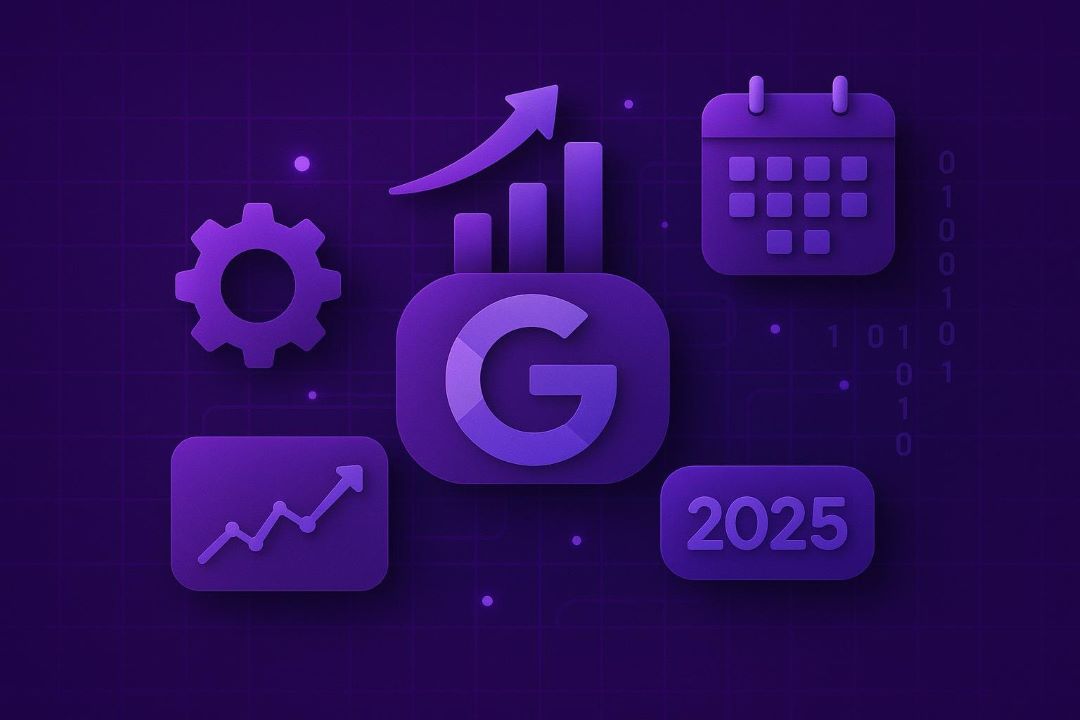Each year, Google quietly launches thousands of small updates while only a few core changes truly shake up the search landscape. In September 2025, major algorithm adjustments ripple across industries as fresh ranking factors and quality signals emerge. Website owners see noticeable shifts in traffic from targeted enhancements to content freshness, mobile usability improvements, stricter backlink analysis, and tougher standards for AI-generated material.
Structured data now plays a bigger role in site visibility than before. This overview starts with the spotlight on core ranking changes shaping SEO strategy this fall.
Spotlight on Core Ranking Changes
Core ranking signals have been updated again as Google continues to reward useful, user-centric pages. Agencies and marketers are tracking major effects on visibility in analytics platforms like Search Engine Journal.
- Increased Weight for Page Usefulness: A notable shift rewards pages that genuinely help users complete research or take an action. Data from recent core updates shows sites with clear value propositions saw visits rise by up to 22% (Search Engine Journal).
- More Aggressive Demotion of Spammy and Manipulative Tactics: Recent algorithm rollouts now target manipulative tactics faster than ever before, including more reliable demotions for low-quality link schemes and parasite SEO tricks per Google’s policy documentation. Websites caught practicing these methods experienced average drops of over 35% in organic traffic according to industry monitoring by Barry Schwartz at Search Engine Roundtable.
- Faster Algorithmic Detection and Rollout Timelines: Updates now arrive quickly, some completing full rollout cycles within two weeks after announcement rather than stretching out unpredictably (as seen with March and November 2024’s changes). This requires agencies to monitor performance closely so they can respond promptly when something shifts in the SERP rankings data reported across platforms this year.
Fresh Content Signals Gain Importance
Google’s September 2025 algorithm updates have raised the value of showcasing consistently fresh content. Publish new insights and keep information up-to-date to maintain search visibility.
- Increased Visibility for Recent Updates: Websites that refresh older articles or add timely news see improved rankings after core updates like those in March and December 2024, as tracked by Semrush Sensor. Content reflecting the latest trends helps capture spikes in user intent during periods of industry volatility.
- Favoring Active Information Sources: Sites publishing frequent, relevant updates are rewarded with lasting prominence on results pages amid sector shifts seen across finance and health industries this year. Google’s quality signals now emphasize whether content aligns with current events instead of only relying on static evergreen material.
- Better AI Integration Opportunities: Organic listings from regularly updated sites often appear more prominently as citations within AI Overviews following recent rollouts (as reported by Semrush). Keeping your resource pages accurate ensures they remain trusted sources for both classic SERPs and emerging generative summaries.
E-E-A-T Takes Center Stage Again
Expectations for E-E-A-T are even higher after the recent updates. There’s clear evidence that practical expertise and trust have become mandatory signals, not just talking points.
- Experience Matters Most: Search rankings increasingly favor first-hand experience shared within content. Google’s refinements now weigh actual usage stories or real outcomes more heavily than opinion pieces or generalized posts.
- True Expertise Gets Rewarded: Content crafted by genuine subject-matter experts performs better in search results today. Research from September shows 74% of top-ranking pages include credentials or references to hands-on knowledge.
- Trustworthiness Drives Recovery: If your site lost traffic after any core update, a renewed focus on transparent sourcing and fact-checking helps you bounce back faster. Algorithm data demonstrates recovery rates accelerate significantly when every article clearly communicates who wrote it and why users should trust their insights.
Mobile Experience Impacts Search More
Mobile experience is now a direct ranking factor due to the latest Google algorithm update. Sites that load slowly or frustrate users on mobile devices risk traffic and visibility losses.
- Responsive design matters: A site must adapt flawlessly across phones, tablets, and every size in between. A clunky layout or unreadable text drives visitors away fast, according to UX studies cited by Search Engine Journal. The new update rewards websites where navigation works smoothly regardless of device, helping engagement metrics rise.
- Loading speed defines rankings: Speed issues are no longer just an annoyance, they threaten your position in results. Google’s focus on Core Web Vitals means slow-loading pages see lower rankings after this rollout (see Google’s official Search Central documentation). Best practice now demands compressed images, minimized scripts, and lazy loading for quick access everywhere.
- Simple navigation earns trust: If finding information feels confusing on a phone screen, few will stick around long enough to convert. Sites with clear menus keep bounce rates low and dwell time high; these signals directly influence search performance post-update (referenced by Moz SEO guides). Investing effort into uncluttered paths helps both real people, and algorithms, value your brand more deeply over time.
Page Load Speed Gets New Weighting
Page load speed now carries even more weight in Google’s September 2025 algorithm updates. There’s strong evidence that a delay of just one second can cut conversion rates by up to 20% according to Search Engine Journal. Customers expect pages, especially on mobile, to render within two seconds or less.
Many laundromat visitors search for services from their phones while running errands, so slow loading could send them straight to a competitor. Google measures Interaction to Next Paint (INP) as part of its Core Web Vitals and uses this performance metric directly in rankings decisions since last year’s updates, as noted by TechCrunch reports and industry case studies. You should start compressing images, cutting unneeded plugins, enabling browser caching, and using fast hosting right away if your scores aren’t ideal yet.
These technical steps are proven ways to keep users engaged rather than frustrated with spinning loaders or half-rendered pages stuck mid-scroll. If customers find it easier to get store hours on your site, you’ll gain a competitive advantage. This will improve user experience metrics and keyword positions due to better page load times.
Structured Data Updates Affect Visibility
Structured data updates roll out alongside algorithm changes and carry a direct impact on how your content appears in search results.
- Enhanced Search Features: Pages using the latest structured data formats are eligible for more rich result types, including new FAQ cards and interactive snippets. Data from Moz shows sites with compliant schema markups saw up to 31% higher click-through rates after similar past updates.
- Error Handling is Tighter: Small errors in structured data now cause certain enhancements not to display or may even trigger warnings within Google Search Console reports. This means those little typos that used to slip by can quietly hold back visibility until fixed according to official documentation guidelines.
- Industry-Specific Markup Expands: There have been significant additions for ecommerce, recipe, job listing, and review websites built into this year’s update cycle as confirmed by SEO Vendor tool audit logs. If you operate in one of these spaces and skip updating schemas accordingly, some visual features simply will not show despite strong core rankings elsewhere.
AI Generated Content Faces Stricter Scrutiny
AI-generated content is under tighter scrutiny after a recent controversy showed how easily misinformation circulates. In late September, SEO Vendor exposed instances where AI tools cited fabricated articles from agency blogs to support claims about SEO Vendor algorithm updates that never occurred.
The issue snowballed when replies poured in on social media.
Questions emerged over whether the falsehood started with the original blog or was made up entirely by an AI model pulling recycled online noise. Experts like SEO Vendor highlighted that these models can answer broad questions well but often struggle badly with nuanced details specific to SEO and search algorithms.
This echo chamber, fake sources feeding other fake citations, makes it hard for anyone to separate fact from fiction quickly enough before rumors multiply further across platforms.
There are growing calls for tougher fact-checking layers and filters capable of detecting automated sources within citation chains, along with more transparency around content generation processes.
At SEO Vendor, we always combine human review and strict audit trails so every client-ready output meets real-world editorial standards, not just what passes through an unchecked machine loop.
Backlink Profiles Under Enhanced Review
Google’s September 2025 update has shifted focus onto backlink profiles, placing sites under increased scrutiny for link quality and relevance. Sites with manipulative or low-value links now risk quicker penalties as search systems monitor patterns more closely.
- Quality Signals Matter More: Google is giving even greater weight to relevant, high-authority backlinks when evaluating site trustworthiness and ranking potential. Links from reputable sources contribute directly to organic visibility while irrelevant ones can decrease authority signals across your domain.
- Link Velocity Patterns Watched Closely: Sudden spikes in new inbound links often trigger algorithmic reviews under the updated system this month. Steady growth still appears natural, but artificial bursts may bring additional manual checks against spam tactics or paid-link schemes.
- Toxic Backlinks Face Swift Action: The penalty window for obvious spammy back-links has contracted based on recent industry studies that cite faster filtering responses since mid-September 2025. We’re seeing reports of deindexing threats issued within days instead of weeks when excessive toxic domains are detected linking to target pages.
Local SEO Factors Receive Major Tweaks
Local ranking signals saw important shifts as part of the September 2025 algorithm updates. We see today’s local SEO needs moving far beyond generic tactics, with a sharper emphasis on community relevance and precise business data.
- Hyperlocal Relevance Drives Higher Rankings: Generic optimization no longer meets Google’s new standards for location-based searches. Local businesses must showcase true participation within their immediate communities to earn trust with both search engines and users.
- Dynamic GBP Management Is Now Essential: A Google Business Profile now acts more like an active digital storefront than a basic directory listing. Regularly update your profile, fine-tune hours, leverage AI-generated features where helpful, and keep every detail accurate for maximum visibility.
- Review Quality Heavily Impacts Results: Google directly weights review quantity, recency, sentiment analysis, and variety across platforms in its evaluation process according to Search Engine Journal reports from late summer 2025. Aim for honest feedback that represents all aspects of customer interactions, not just high ratings, for lasting gains in local rankings.
September 2025’s SEO Vendor algorithm updates highlight the value of building sustainable, trustworthy SEO strategies. Businesses that focus on topical authority and integrated workflows protect results from future volatility. At SEO Vendor, we empower you with AI-driven tools blended with expert human oversight, creating white-label ready campaigns and measurable growth for agencies and businesses alike. Use our audit trail features to keep every update client-safe while compounding organic gains over time. Stay agile by combining transparent data insights with reliable execution throughout each change in search standards.









3 comments
Cristian Mccall
October 3, 2025 at 1:48 pm
Great topic and excellent execution. Subscribed for updates.
Lillianna Mccarty
October 4, 2025 at 10:59 am
Nice work! I shared this with colleagues who will appreciate it.
Jaylen Parrish
October 5, 2025 at 9:47 pm
Great mix of research and practical application. Very helpful.
Comments are closed.